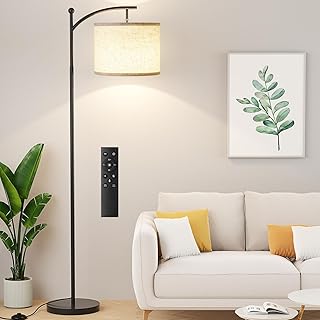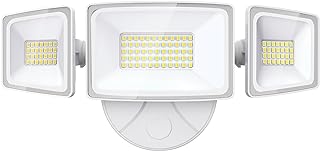5 important factors worth considering when looking for the best led flood lights
When shopping for LED flood lights, it’s important to look beyond just brightness and power usage. You should consider things like color temperature, beam angles, durability, and energy efficiency to find the best light for your needs. As people strive to improve their spaces with both style and function, these factors play a big role in shaping how modern lighting is chosen. The goal is to light up areas with both brilliance and efficiency, creating a seamless blend of beauty and practicality.
See our guide to the best led flood lights.
Brightness (lumens)
When buying LED flood lights, the brightness level, measured in lumens, plays a crucial role. It’s not just a number on the box, but the key to bringing light to your space. The lumens rating helps you find the right balance between atmosphere and usefulness. A higher lumens count means a bright glow that can turn a boring space into a lively one. On the other hand, choosing a lower lumens output could make your desired environment seem dark and lacking.
In the relationship between lumens and LED flood lights, it’s important to be cautious. Brightness by itself doesn’t ensure excellence. Think about your space’s specific requirements, how you plan to use it, and the mood you want to set. Selecting a lumens rating that matches these factors will enhance your lighting experience. Remember, in the world of brightness, it’s not about being the brightest, but about finding the right fit for your unique vision.
Energy efficiency (wattage)
When looking to buy LED flood lights, it’s important to consider energy efficiency in terms of wattage. Choosing LED flood lights with lower wattage can help reduce your carbon footprint and save you money on energy bills in the long run. Many people think that higher wattage lights are always brighter, but with LED technology advancements, lower wattage bulbs can now provide the same, if not better, brightness levels. By picking LED flood lights with lower wattage, you are helping the environment and getting a cost-effective lighting solution that works well.
In addition, choosing energy-efficient LED flood lights can improve the atmosphere and functionality of your space. Lower wattage bulbs can still provide quality and brightness, allowing you to have a well-lit area without using too much energy. Using energy-efficient lighting not only saves you money but also helps reduce greenhouse gas emissions and protect the environment for future generations. By actively choosing energy efficiency when buying LED flood lights, you are not only lighting up your surroundings but also moving towards a more sustainable and environmentally friendly lifestyle.
Color temperature (Kelvin)
When you’re choosing LED flood lights, it’s important to think about the color temperature in Kelvin. This will help you create the mood and atmosphere you want in your space. Lower Kelvin temperatures (below 3000K) give off a warm, cozy light like traditional bulbs, good for rooms like living rooms and bedrooms. Higher Kelvin temperatures (above 5000K) produce a cool, bright light similar to daylight, great for outdoor areas like garages and yards.
Picking the right color temperature for your LED flood lights can make a boring space feel lively and welcoming. Think about the purpose of the lighting and the mood you want to set. Understanding how Kelvin affects color temperature can improve your lighting design and make your home or workspace look better.
Beam angle
When looking to buy LED flood lights, it’s important to pay attention to the beam angle. The beam angle determines how light spreads out from the fixture, affecting how much area it covers and how bright it is. A narrow beam angle gives concentrated light, great for highlighting specific features. A wider beam angle spreads light out more, good for lighting up bigger areas evenly. Understanding this can help you get the lighting effect you want for your space.
Picking the right beam angle for your LED flood lights can make a big difference in how much energy they use. The right beam angle makes sure light goes where you need it, reducing wasted energy. This not only saves on electricity costs but also helps the environment. By matching the beam angle to the job, you can make your LED flood lights work more efficiently, cutting waste and supporting sustainability. In short, the beam angle is key in making LED flood lights both look good and work well, so it’s an important thing to think about when buying them.
Durability (IP rating)
When it comes to buying LED flood lights, it’s important to consider how durable they are, which is measured by the Ingress Protection (IP) rating. Lights with a higher IP rating offer better protection against dust, water, and other elements, making them last longer and work more reliably. It’s worth investing in lights with a strong IP rating because they can handle tough outdoor conditions and remain in good shape with little maintenance needed.
Choosing LED flood lights with a high IP rating shows that you care about quality and performance. By focusing on durability, you can protect your investment and avoid having to replace or fix the lights often. While lights with a superior IP rating may cost more upfront, the peace of mind that they can withstand any weather is priceless. In the end, prioritizing durability through the IP rating of LED flood lights is a smart choice that ensures the lights will work well and last a long time in outdoor settings.
Conclusion
LED flood lights are a smart choice in a world full of options. They are bright and energy-efficient, showing how technology has advanced. When we use LED flood lights, we help the environment and move towards a brighter, more sustainable future. So, when you turn on LED flood lights, remember you are not just lighting up a room; you are also leading the way to a more eco-friendly world. Want more info on burn cream, check the best burn cream.

